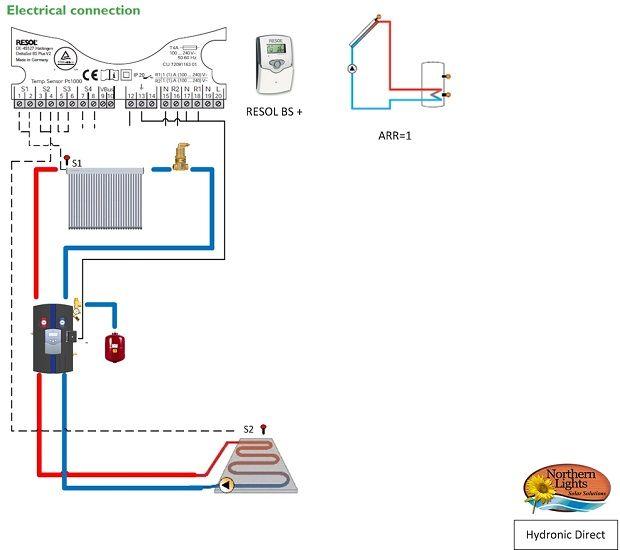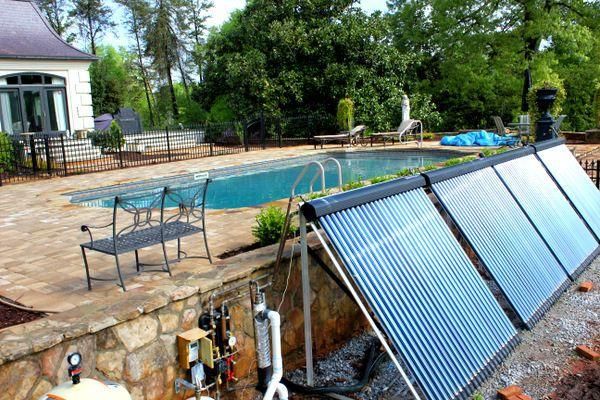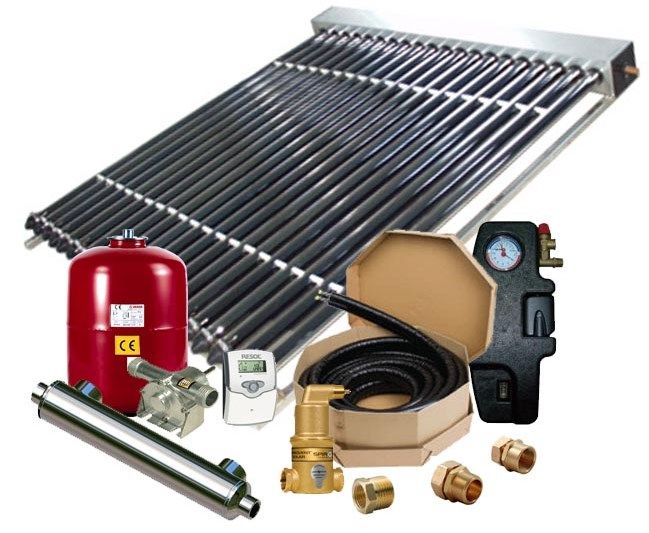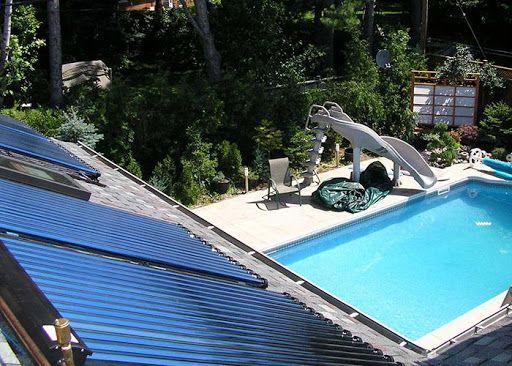When looking for solar water heaters,
you should look no further than Northern Lights Solar Solutions. Their
solar water heating systems are pre-engineered for optimal performance
and energy efficiency. They take all the guesswork out of the solar
system installations by adding pre-configured solar heating design
packages proven to work efficiently. When designing solar water heaters,
you must have the correct size.
If the system is oversize, it can minimize the system performance while causing the paybacks to reduce. A large solar heating system tends to stagnate and switch off more often than a properly sized solar heater. That means the system will stop working and won't contribute to solar energy on hot sunny days. A professionally designed solar heating should attempt to deliver around 50-65% overall solar contribution.

But you can increase the solar contribution with a secondary heating load like a pool, hot tub, or home heating system. Then, when the primary system reaches the maximum capacity, the solar controller will default to the secondary heating zone and discard the solar heat energy to that zone, thereby minimizingthe chance that the system will overheat and stagnate.
There are so many factors that you need to consider while designing a solar water heater. Some are them are discussed below:
Determine The Location.
You need to determine the optimal location of your solar system as per the southern exposure. Then, you can install it on the ground, roof, or wall; this space will usually help you know the maximum number of collectors.
Every collector requires around 8' 4" of width spacing and 6' 6" vertical spacing. Next, you need to determine the optimal mounting angle. The location's latitude must be plus 30 degrees for heating during winter. For summer heating, the location's latitude must be minus 30 degrees. The system should be installed per the location's latitude if you want average annual heating.
Determine The Size.
You should choose a pre-configured solar heating system (SWH) as per the number of collectors required for the application. For example, you will need the SWH-1 system for two to four persons. An SWH-2 system is a must for four to six persons, whereas an SWH-3 system requires six to eight persons. You can choose your home's solar heating system from a combo, indirect, or pre-heat solar system.
Determine Additional Heating Zone.
You can consider adding an extra secondary solar heating loop like pool heating, home heating, or hot tub. You should upsize the solar water heating system to accommodate the additional demands. For example, a 1200 square-foot home with a radiant floor heating system and four- a persons home would require an SWH-4 system. Then, they will need to choose an SWH system with in-floor heating.
Understand types of solar heating designs.

You
must choose from different solar heating system designs available at
Northern Lights Solar Solutions. Choose from Supplemental Solar Water
Heater with Internal Electric Heating Element for Back Up, a Pre-Heat Solar Water Heating Design with Second Hot Water Tank, and Solar Water Heater with On-Demand Back UP Heater.
Bottom Line –
Do you want to know more details about the designs of solar water heaters? If yes, you should contact Northern Lights Solar Tubs at +1 (800) 317-9054.






